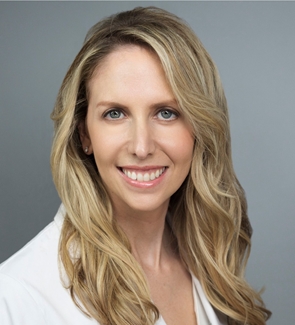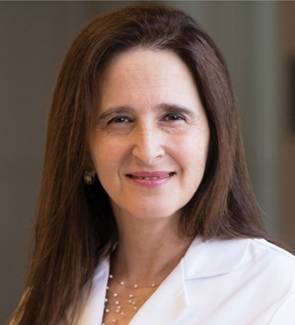Radiologists don’t get enough credit for their role in patient care, says Shlomit A. Goldberg-Stein, MD, musculoskeletal radiologist at Montefiore Medical Center in the Bronx, New York. “People have this idea that radiologists sit in a dark room and don’t interact with patients,” she says. “But engaging with patients is a big part of what I do and what I love about what I do. I think the same is true for a lot of other radiologists and nuclear medicine physicians. We engage in a lot of patient-facing work, which I think is underrecognized.”

Shlomit A. Goldberg-Stein, MD, musculoskeletal radiologist at Montefiore Medical Center, led a research project to quantify the impact of the nuclear medicine patient consultation program. |
As a member of
ACR’s Commission on Patient- and Family-Centered Care and a physician researcher, Goldberg-Stein is committed to quantifying the impact that radiologists have on patient care when they take time to talk with patients before a stressful test or to relay findings in person. “When those things aren’t quantified, they may be taken for granted or undervalued, even though they are a huge part of what we do in the service of our patients,” Goldberg-Stein says.
In addition to her clinical activities, Goldberg-Stein researches the efficacy of image-guided treatments for hip and foot pain and the impact of patient-centered radiology initiatives on the quality of care and health outcomes. In 2018, her research team turned their efforts to quantifying the
impact of a patient consultation program that Montefiore nuclear medicine physician Renee M. Moadel, MD, started for nuclear medicine patients. The consultation program includes a pretreatment consultation with the patient to explain the procedure and help prepare the patient for what it entails.
The team included radiology residents Jesse Berman, MD, and Adam E. Goldman-Yassen, MD, as well as Juliya Volansky, director of patient experience for Montefiore’s radiology department. Moadel and another nuclear medicine physician, Tony Abraham, DO, MPA, also worked on the study. The
results were published online in the February 2020 issue of
Current Problems in Diagnostic Radiology.
Gathering Patient Feedback
The evaluation involved surveying nuclear medicine clinic patients before and after their appointments. For the surveys, Berman and Goldman-Yassen adapted a questionnaire that radiologists at Massachusetts General Hospital had developed for a
published study . The questionnaire examined radiologists’ impact on patient understanding of general radiology procedures. Questions covered the patients’ knowledge and feelings about their condition, nuclear medicine, and their specific treatment.
The goal was to quantify the impact of radiologists’ “non-interpretive” efforts — actions that are not directly related to reading images but that impact clinical care, including pretreatment consultation and other patient education efforts. “We structured the survey to tease out some of that information and bring it to the forefront,” Goldberg-Stein says.
A total of 38 patients who came to the clinic between July of 2018 and January of 2019 completed the paper-based surveys, which were offered in both English and Spanish, before and after their consultation appointments. Most of the patients received nuclear medicine treatment for thyroid disease, but others were there for liver, prostate, or other care. About half had completed some college or postgraduate education.

Montefiore nuclear medicine physician Renee M. Moadel, MD, started the consultation program to help patients better prepare for their nuclear medicine treatments. |
Before their consultations, about 45% of respondents described themselves as “somewhat familiar” or “extremely familiar” with the term nuclear medicine doctor. After their appointments, 82% of patients reported that they were “somewhat familiar” or “extremely familiar” with the term. Less than one-third of patients said that they had a clear understanding of the therapy and plan for follow-up before the appointment, compared to 84% afterwards.
“A fair number of patients didn’t even know why they were there or what kind of cancer they had before the appointment,” Goldberg-Stein says. “They came out knowing more about their illness and understanding the treatment plan.”
Reducing Anxiety
The reduction in patient anxiety levels was the most gratifying, Goldberg-Stein says. Before the consultation, 32% of patients reported some level of anxiety about their treatment. Afterwards, nearly 90% of patients said that they felt “generally” or “perfectly” calm. “There was a significant impact on our patients, and we could measure it and see it,” Goldberg-Stein says. “It was very validating.”
The results of the study, Goldberg-Stein adds, show that the program fills a gap in care that nuclear medicine physicians are uniquely prepared to fill. “Of everyone on the treatment team, they have the greatest knowledge of the treatment’s requirements and preparations, including when to stop or start medications and how to set up a patient’s home to reduce radiation exposure,” Goldberg-Steins says. She adds that the same is true of many other radiological procedures and treatments — pointing to an important role for radiologists in patients’ experience of care.



